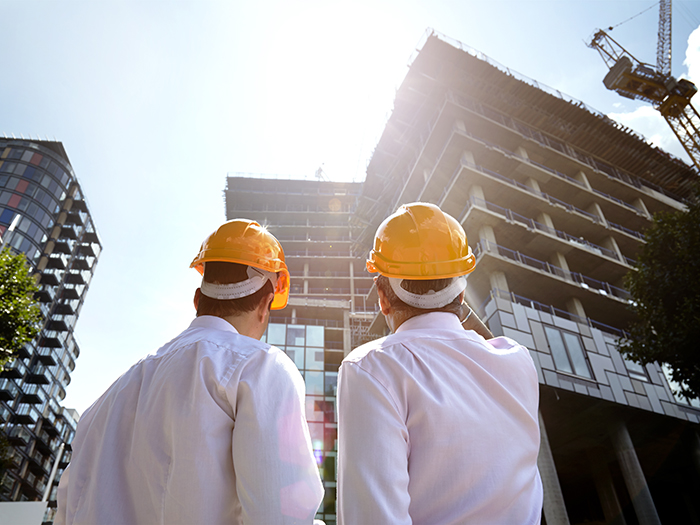Resilient Construction Is the Future of the Industry. Here’s Why

It’s no secret that extreme weather events are catastrophic and costly.
Over the last 39 years, they’ve cost $1.6 trillion in losses. In 2020 alone, 22 events cost over one billion dollars each.
And they’re only getting worse. Over the course of the 21st century, heavy precipitation events are expected to increase by at least 50%. Heat waves, hurricanes and other natural disasters are also expected to increase.
In the wake of these severe weather events, many in construction are turning to building practices that make buildings better able to stand up against the effects of severe weather.
Known as resilient construction, these practices are protecting investors and communities from the costs of damaged properties.
As the practice becomes more popular, it creates business opportunities for contractors to build stronger, retrofit old structures and develop protective infrastructure. Here’s why risk managers and contractors should add it to their climate change tool kits.
“Resilient communities survive and recover more quickly from the increasing frequency and severity of weather events,” said Ben Beauvais, senior vice president and GRS construction executive at Liberty Mutual Insurance.
What Is Resilient Construction?

Ben Beauvais, senior vice president and GRS construction executive, Liberty Mutual Insurance
Resilient construction is the practice of building stronger structures and retrofitting older properties so that they can withstand increasingly severe storms.
“Resilient construction is about building stronger to protect investments, communities and lives,” Beauvais said.
The approach functions at both the individual and community levels. The goal for individual projects is to save money by building stronger structures the first time.
That way, property owners minimize repair costs and business interruption after a storm damages their buildings. They may also incur fewer costs to retrofit structures when building codes change.
If a building is in a flood plain, for example, this could involve putting critical infrastructure on higher floors, so that businesses can resume work more quickly even if their offices flood.
At the community level, resilient construction is about making sure that communities can survive and recover after a severe weather event. Storm levees, dikes and the retrofitting of older buildings are all part of building resilient communities.
“Buyers and taxpayers would like to think that the buildings that they’re occupying — whether it’s living, working, or conducting their daily lives — are built in a way to withstand these shocks and minimize the interruption to business should they happen,” Beauvais said.
The approach has already proven successful.
After Hurricane Katrina decimated New Orleans’ levee system, the federal government invested $15 billion to rebuild the levees and protect the cities. These efforts protected the city from massive flooding when Hurricane Ida hit this year.
Resilient construction offers a major business opportunity for contractors in the years to come.
Two and a half trillion square feet of buildings will be constructed or renovated in cities across the globe in order to protect them from increasingly severe weather over the next 30 years, per Architecture 2030, a UN environment global status report.
The Challenges of Building Resilient Communities
Though resilient construction represents a major business opportunity, contractors face several challenges in adopting the practice.
One challenge is a lack of clarity within building codes and state and federal regulations. Despite the fact that resilient construction has proven effective in preventing damage resulting from severe weather, regulators have not kept pace in their codes.
“Building codes and regulations are sort of slowly changing to reflect the current science and our response is going to have to develop and be enhanced along with those changing regulations in the future,” Beauvais said.
Another issue that may make some constructors hesitant to adopt the approach is the additional expense.
Resilient construction can increase construction costs by about one percent, the National Institute of Building Sciences (NIBS) Reports. Contractors may be able to convince developers that absorbing these costs is well worth it.
“Contractors operate on a very narrow margin and absorbing additional costs is somewhat difficult,” Beauvais said.
“However, they are in a unique position as trusted advisors to help clients understand the value of building resiliently, and how marginal additional costs yield significant benefits over a project’s lifetime.”
The investment is well worth it, however.
For every dollar spent updating a building to meet the latest code requirement, NIBS found that $11 is saved. When builders go above and beyond existing code requirements, it saves builders $4 for every $1 spent.
“If you’re going to build a building or a structure or make a transit or other infrastructure investment, it really is smart money to consider what could happen to that project over the course of its life,” Beauvais said.
How Risk Managers and Insurers Can Help
As contractors weigh the benefits of resilient construction, their risk management and insurance teams can serve as trusted advisors.
“I think that there are a lot of things that risk managers, contractors and developers could do. And I think one of the most important things contractors should know is that they can partner with their risk advisors, their broker and insurer,” Beauvais said.
“They should really be bringing them in as trusted partners to understand the issues around the change in climate and mitigation opportunities.”
Risk managers and underwriters can help contractors see the bigger picture and anticipate not only the climate risks of today, but also those that are likely to evolve over the next several years.
“I think it’s important that the industry understands that what you build today can be impacted by unanticipated risks that may evolve in 75 years,” Beauvais said.
“The insurance industry needs to help clients understand how climate events are likely to have an outsized effect. And we need to share how they can best prepare themselves for that changing climate exposure.”
Insurers and risk managers are valuable resources because they will often partner with those in other industries to increase their knowledge of a given risk. Beauvais noted that insurers are increasingly employing climate scientists, making them one of the perfect partners for contractors when weighing the risks and benefits of resilient construction.
“I think partnering with the right type of carrier who can bring those types of resources to bear is a huge advantage,” Beauvais said. “I think that becomes an increasingly important consideration when we start to look forward.” &










